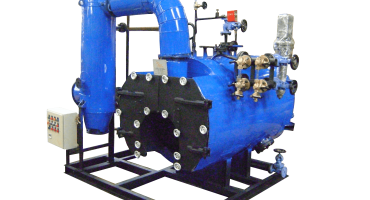Prevention of Steam Leakage in Boilers
Steam Boilers are of utmost importance in the process and manufacturing sector to ensure high-quality production or power generation through steam. Therefore, the steam produced in the boiler must be of superior quality. Various parameters are considered to ensure seamless operations of the steam boiler. Steam leakage is a phenomenon that causes loss and inefficiency in the boiler system. Steam is a high-value commodity and leads to a higher value with higher pressure. Therefore, it is necessary to take action to repair steam leaks as soon as they occur. Steam leaks can immensely affect production, cause safety issues, and increase maintenance costs.
An Overview of Steam Leakage in Boiler:
After a few years of operation, steam boilers tend to leak steam due to outdated gaskets, fittings, and other areas. Without proper maintenance and regular inspection, the number of leaks and the volume of leaked steam only increase tremendously.
The most common locations of finding steam leaks are:
Steam leaks from valves and steam traps are further classified into external leaks, such as those from gland packing, and internal leaks that cause steam escaping through the seat and into the outlet. In addition to higher energy costs, steam leaks waste boiler water and chemicals that can prove hazardous to the operating staff and the boiler system.
One pound of 100 psi steam consists of about 1,200 BTU. Considering the steam is produced at 85% efficiency, the input energy is 1,200 / 85% = 1,411 BTUs per pound. Therefore, 1,000 pounds of steam requires at least 1.4 million BTU for its production.
The amount of steam leaked from a steam trap in a normal operation depends on the type of trap. Similarly, in the case of a steam trap, the steam leaking from even one failed trap can result in a significant financial loss.
Preventing Steam Leaks in Boiler:
Prevention of Steam Leakage Due to Pipe Fittings:
The primary causes of steam leakage from the pipe and screwed connectors are:
Stress from pipes expanding or contracting due to the heat of the steam
Threaded components that have loosened due to that stress, and
Deterioration of gaskets.
The nuts and bolts of the fitting can be loosened as pipes contract due to the reducing steam temperature. It consequently results in causing a gap to open up between the two pipes for releasing the steam.
If the operating personnel detects a steam leak, it requires more than the tightening of the screws on the fitting or replacement of the gaskets. It is essential to examine the cause of the leak and accordingly change the location of fixed pipe supports or add expansion joints. If prompt measures such as these are overlooked, the steam leak may occur again in the future.
Prevention of Steam Leakage Due to Valves:
The majority of external leaks from valves emerge from gland packing. Due to the design of the valve, gland leaks can be avoided temporarily by tightening the valve.
However, when the valve is opened and closed frequently, it may cause leaking again within a short period. A bellows seal valve is preferable in such situations as it is highly resistant to gland leakage due to their bellows that closes off the interior and exterior gland packing.
Interior leakage occurs when steam is released through the valve seat and flows through the outlet as the valve is in the closed position. Interior leakages are not visible from the outside, and therefore, are difficult to spot. Detecting interior leaks requires maintenance tools such as a stethoscope or a device that measures ultrasonic vibrations.
Steam leakages are common from the seat of valves with both adjustable valve openings. It can be prevented by using adjustable and closable valves that eliminate the need for dual-function valves. On the other hand, another effective method of preventing internal leaks is installing a separator that removes the condensate entrained within the steam. The introduction of dry steam prevents the valve seat from deteriorating.
Prevention of Steam Leakage Due to Steam Trap:
Leaks take place when the device stops functioning properly in valves and pipe fittings, but for steam traps, it is also important to consider the loss of steam that occurs during operation.
Steps to Reduce Steam Leaks in Boiler:
Practice a regular maintenance schedule on the steam trap. Track the checks and maintenance to find problems before it becomes challenging.
Conclusion:
Rakhoh Boilers provides efficient industrial steam boilers and the best thermal solutions since their inception in 1983 as boiler manufacturers in Pune. We have successfully installed 3000+ boilers in over 26 countries worldwide for 20 process industries.
For more details on our products and services, visit www.rakhoh.com
- Published in Boiler, Steam Boiler








